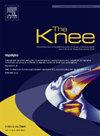History of knee dislocation is associated with longer operative times and higher constraint in total knee arthroplasty: a matched cohort analysis
IF 2
4区 医学
Q3 ORTHOPEDICS
引用次数: 0
Abstract
Background
Knee dislocations (KD) are devastating injuries that are known to predispose to post-traumatic arthritis of the knee. While some patients will require total knee arthroplasty (TKA), there is limited literature on outcomes of TKA following KD. The purpose of this study is to compare surgical characteristics and outcomes between patients undergoing TKA following KD versus those undergoing TKA for osteoarthritis.
Methods
A retrospective review was conducted of patients who underwent TKA after KD between 2006 and 2021. The KD cohort was matched 1:2 to a cohort of primary TKA patients with a preoperative diagnosis of arthritis based on sex, age, and surgery date. Surgical variables included TKA constraint level, operative time, and tourniquet time. Postoperative complications including infection, instability, stiffness, and revision surgery were also recorded.
Results
Fifteen patients were identified who underwent TKA following KD with a mean follow-up of 2.8 years. The KD cohort had longer tourniquet times (117 ± 34.5 vs. 84.9 ± 23.9 min, p < 0.01) and operative times (180.7 ± 55.9 vs 121.6 ± 25.3 min, p < 0.001). The KD group more often required higher levels of constraint and stem usage (p < 0.0001). KD patients trended toward higher rate of infection (20 % vs 0 %, p = 0.03), and revision surgery (26 % vs 3 %, p = 0.04). No statistically significant difference was found in postoperative range of motion at final follow-up up (118° [85–135°] vs. 116° [90–140°]; p = 0.8)
Conclusion
TKA after KD is associated with longer operative times and increased use of constrained and stemmed implants.
膝关节脱位史与全膝关节置换术中较长的手术时间和较高的约束相关:一项匹配队列分析
背景:膝关节脱位(KD)是一种毁灭性的损伤,已知易导致创伤后膝关节关节炎。虽然一些患者需要全膝关节置换术(TKA),但关于KD后全膝关节置换术结果的文献有限。本研究的目的是比较KD后接受全膝关节置换术与骨关节炎患者接受全膝关节置换术的手术特点和结果。方法回顾性分析2006年至2021年期间接受KD术后TKA的患者。KD队列与术前诊断为关节炎的原发性TKA患者队列根据性别、年龄和手术日期进行1:2匹配。手术变量包括TKA约束水平、手术时间和止血带时间。术后并发症包括感染、不稳定、僵硬和翻修手术也有记录。结果15例患者在KD后接受TKA,平均随访2.8年。KD组止血带时间更长(117±34.5 vs 84.9±23.9 min, p <;0.01)和手术时间(180.7±55.9 vs 121.6±25.3 min, p <;0.001)。KD组通常需要更高水平的约束和茎的使用(p <;0.0001)。KD患者有较高的感染率(20% vs 0%, p = 0.03)和翻修手术(26% vs 3%, p = 0.04)。最终随访时,两组患者术后活动范围(118°[85-135°]vs 116°[90-140°])无统计学差异;p = 0.8)结论KD术后tka与手术时间延长、约束种植体和柄种植体使用增加有关。
本文章由计算机程序翻译,如有差异,请以英文原文为准。
求助全文
约1分钟内获得全文
求助全文
来源期刊

Knee
医学-外科
CiteScore
3.80
自引率
5.30%
发文量
171
审稿时长
6 months
期刊介绍:
The Knee is an international journal publishing studies on the clinical treatment and fundamental biomechanical characteristics of this joint. The aim of the journal is to provide a vehicle relevant to surgeons, biomedical engineers, imaging specialists, materials scientists, rehabilitation personnel and all those with an interest in the knee.
The topics covered include, but are not limited to:
• Anatomy, physiology, morphology and biochemistry;
• Biomechanical studies;
• Advances in the development of prosthetic, orthotic and augmentation devices;
• Imaging and diagnostic techniques;
• Pathology;
• Trauma;
• Surgery;
• Rehabilitation.
 求助内容:
求助内容: 应助结果提醒方式:
应助结果提醒方式:


